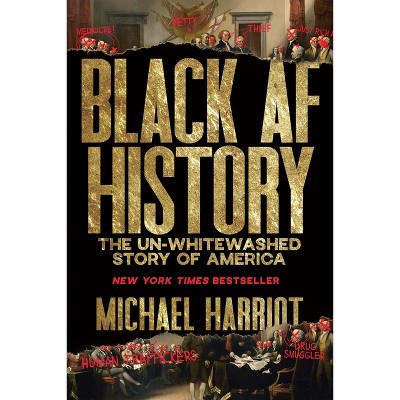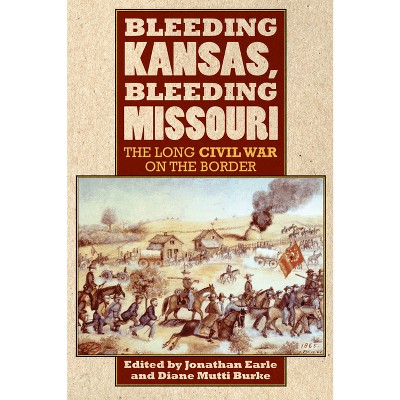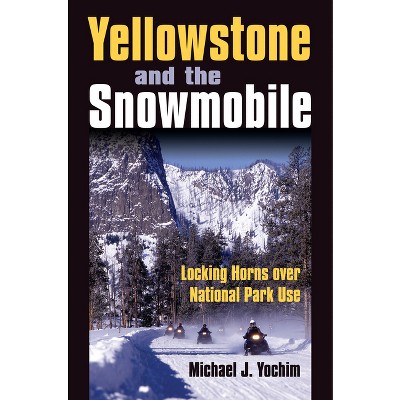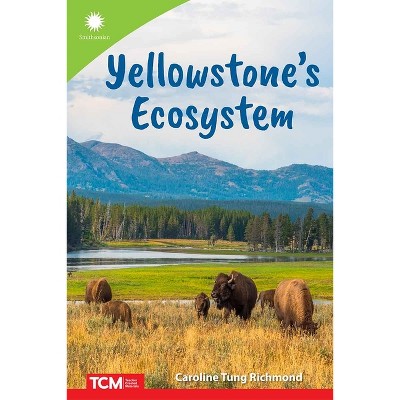About this item
Highlights
- In the winter of 1996-97, state and federal authorities shot or shipped to slaughter more than 1,100 Yellowstone National Park bison.
- Author(s): Diane Smith
- 208 Pages
- History, United States
Description
About the Book
The book explores the early relationship between Yellowstone National Park and the Smithsonian Institution as they tried to conserve American wildlife for future generations.
Book Synopsis
In the winter of 1996-97, state and federal authorities shot or shipped to slaughter more than 1,100 Yellowstone National Park bison. Since that time, thousands more have been killed or hazed back into the park, as wildlife managers struggle to accommodate an animal that does not recognize man-made borders.
Tensions over the hunting and preservation of the bison, an animal sacred to many Native Americans and an icon of the American West, are at least as old as the nation's first national park. Established in 1872, in part "to protect against the wanton destruction of the fish and game," Yellowstone has from the first been dedicated to preserving wildlife along with the park's other natural wonders. The Smithsonian Institution, itself founded in 1848, viewed the park's resources as critical to its own mission, looking to Yellowstone for specimens to augment its natural history collections, and later to stock the National Zoo. How this relationship developed around the conservation and display of American wildlife, with these two distinct organizations coming to mirror one another, is the little-known story Diane Smith tells in Yellowstone and the Smithsonian.
Even before its founding as a national park, and well before the creation of the National Park Service in 1916, the Yellowstone region served as a source of specimens for scientists centered in Washington, D.C. Tracing the Yellowstone-Washington reciprocity to the earliest government-sponsored exploration of the region, Smith provides background and context for many of the practices, such as animal transfers and captive breeding, pursued a century later by a new generation of conservation biologists. She shows how Yellowstone, through its relationship with the Smithsonian, the National Museum, and ultimately the National Zoo, helped elevate the iconic nature of representative wildlife of the American West, particularly bison. Her book helps all of us, not least of all historians and biologists, to better understand the wildlife management and conservation policies that followed.
Review Quotes
"A valuable contribution to the historiography of conservation and public lands."--Pacific Northwest Quarterly
"Yellowstone and the Smithsonian provides an important foundation on which to critically reexamine American attitudes toward wildlife conservation."--Journal of American History
"Smith has contributed immeasurably to our understanding of a period often compressed by environmental historians. It is a story we deserve to know and Diane Smith tells it extremely well."--Pacific Historical Review
"A valuable scholarly addition to the literature of both the Smithsonian and Yellowstone, this is as wonderful to read as a novel."--Environmental History
"Smith's excellent administrative history should assume an important place in the historiography of wildlife conservation history in the United States."--Western Historical Quarterly
"Diane Smith's Yellowstone and the Smithsonian is an excellent analysis of the institutionalization of wildlife protection. It's an essential and much needed work of US environmental history. Highly recommended!"--Douglas Brinkley, author of Rightful Heritage: Franklin D. Roosevelt and the Land of America
"In 1856, western surveying and exploring expeditions were sending large animals to the Smithsonian National Museum, which in turn transferred them to the nearby United States Insane Asylum to provide "amusement and mental diversion" for the patients. From these inauspicious beginnings, an important network of "specimen donation, distribution, display, and exchange" developed over the next three generations between Yellowstone National Park and the Smithsonian that would help shape American wildlife conservation. In telling this fascinating story, Diane Smith's engaging book Yellowstone and the Smithsonian makes a major contribution to the fields of American cultural history, Museum Studies, and American Studies, as well as American western and environmental history."--David M. Wrobel, author of Global West, American Frontier: Travel, Empire, and Exceptionalism from Manifest Destiny to the Great Depression
"Diane Smith's Yellowstone and the Smithsonian: Centers of Wildlife Conservation examines the unique relationship between two iconic American institutions--the Smithsonian and the world's first national park at Yellowstone. Smith discusses the Smithsonian's evolving and often conflicting roles as a center for scholarly research, a museum to educate the public, and a zoological garden and "pleasuring ground." Smith also confronts the role that the early administrators of Yellowstone National Park played in obtaining both living and dead wildlife specimens for study and display at the Smithsonian. This relationship between these institutions, which included wildlife specimen exchanges and the confinement of charismatic animals (particularly endangered bison) in the national park for the enjoyment of park visitors and future shipment to the East, is often overlooked by environmental historians. Students of environmental history as well as general audiences with an interest in the Yellowstone National Park or the early history of the Smithsonian will find Smith's work--which features world's fair wildlife displays, professional taxidermy, and the US Calvary's management of Yellowstone--both engaging and accessible."--Kathy S. Mason, author of Natural Museums: U.S. National Parks, 1872-1916
"This wonderful book should be ranked as required reading in the literature about Yellowstone National Park. Smith insightfully unravels not only how scientific institutions of the late 19th and early 20th centuries shaped the treatment of wildlife in the park, but also reveals the deep changes in how Americans have understood wildlife in North America, and the enormous difficulties encountered in conserving this magnificent heritage."--James A. Pritchard, author of Preserving Yellowstone's Natural Conditions: Science and the Perception of Nature
Shipping details
Return details
Trending History












